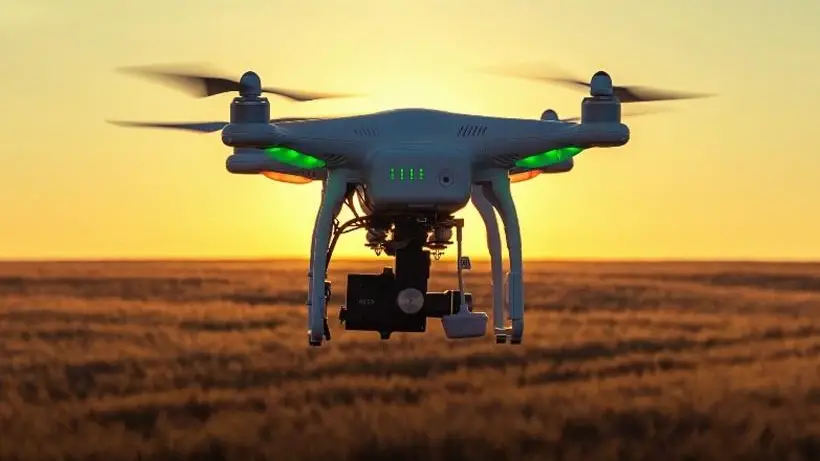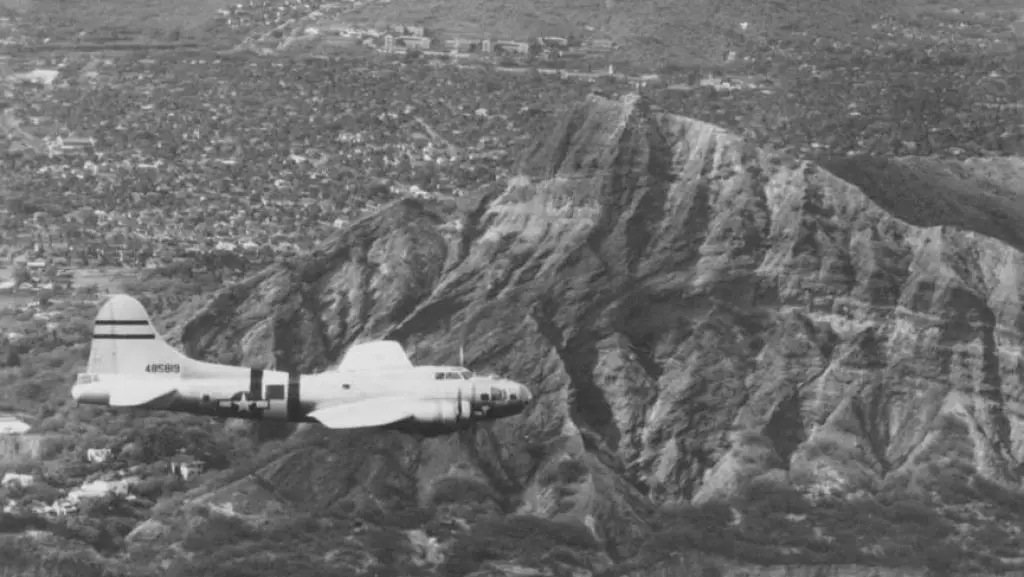A Comprehensive Guide to the History and Evolution of Drones

Get a fascinating look at the history and evolution of drones, from their military origins to their present-day use cases. See how these amazing machines have changed and developed over time.
Drones, also known as unmanned aerial vehicles (UAVs), have come a long way since their inception. Initially developed for military purposes, drones have now found their way into various industries and even into the hands of consumers. The history and evolution of drones showcase their remarkable journey from being exclusively used in military operations to becoming popular devices for recreational, commercial, and scientific applications. In this article, we will delve into the captivating history and explore the evolution of drones, highlighting their transformation from military tools to consumer-friendly gadgets.
The Beginnings of Drones: Military Roots
The use of unmanned aerial vehicles, or drones, has become increasingly widespread in recent years, with applications ranging from aerial photography and videography to search and rescue operations. However, the origins of drones can be traced back to military use.
The earliest known use of unmanned aerial vehicles dates back to the mid-1800s, when the Austrian military used unmanned balloons filled with explosives to attack Venice. In the early 1900s, the United States military experimented with unmanned aircraft as targets for live-fire training, but it wasn’t until the 1950s that the first modern drone was developed.
The United States Air Force developed the first unmanned aerial vehicle, the Kettering Bug, in 1917. The Kettering Bug was a biplane that was launched from a rail and flown using an autopilot system. The Bug was intended to be used as a weapon and was designed to fly to a predetermined location and then crash into its target.
During World War II, unmanned aerial vehicles were used by both the Allies and Axis Powers. The Germans used unmanned aircraft to attack Allied ships, while the Allies used drones for reconnaissance and target practice.
In the 1960s, the United States military developed the first unmanned aerial vehicle capable of landing on an aircraft carrier, the Ryan Firebee. The Firebee was used for reconnaissance missions during the Vietnam War.
Today, drones are an integral part of military operations, used for everything from surveillance and reconnaissance to targeted killings. However, the use of drones in warfare remains controversial, with concerns about civilian casualties and the ethics of remote warfare.
Outside of the military, drones have also found a wide range of civilian applications, from aerial photography and videography to search and rescue operations. As drone technology continues to advance, it is likely that we will see even more innovative uses for unmanned aerial vehicles in the future.
The Birth of Modern Drones: World War II
World War II played a significant role in the development of modern drones, also known as unmanned aerial vehicles (UAVs). During the war, both the Allies and Axis powers developed unmanned aircraft for a variety of purposes, including reconnaissance, target practice, and even offensive operations.
The first modern UAV was developed by the British in the early 1930s. The aircraft, known as the Queen Bee, was a radio-controlled target drone used for anti-aircraft gunnery practice. The Queen Bee was also used for reconnaissance missions and was instrumental in training anti-aircraft gunners.
The United States military also began experimenting with UAVs during World War II. The first American UAV was the Radioplane OQ-2, which was used for reconnaissance missions and as a target for anti-aircraft guns. The OQ-2 was a small, lightweight aircraft with a wingspan of just over 12 feet and was controlled remotely by a pilot on the ground.
The Germans also developed UAVs during World War II, including the Fritz X, a radio-guided bomb used to attack Allied ships. The Fritz X was a significant innovation in aerial warfare, as it allowed for precision bombing from a distance.
After the war, interest in UAVs waned, and development efforts were limited to a few small programs. However, in the 1980s and 1990s, advancements in technology led to renewed interest in unmanned aerial vehicles.
Today, drones are used for a variety of purposes, including aerial photography and videography, surveying, search and rescue operations, and even delivering packages. The military also continues to use drones for reconnaissance and offensive operations.
Overall, World War II played a significant role in the development of modern drones. The need for unmanned aircraft for reconnaissance and target practice led to significant advancements in technology, paving the way for the widespread use of UAVs we see today.
Cold War Advancements: Aerial Surveillance
The Cold War era saw significant advancements in drone technology, particularly in the area of aerial surveillance. Both the United States and the Soviet Union invested heavily in unmanned aerial vehicles (UAVs) as a means of gathering intelligence and monitoring each other’s military activities.
During this period, the United States Air Force developed the AQM-34 Firebee, a jet-powered drone capable of flying at high altitudes and speeds. The Firebee was used for reconnaissance missions over the Soviet Union and other areas of interest, providing valuable intelligence to the United States.
The Soviet Union also developed its own line of UAVs, including the Tu-123, which was used for reconnaissance and target acquisition. The Tu-123 was capable of flying at high altitudes and speeds, making it difficult to detect and intercept.
In addition to surveillance missions, drones were also used for target practice and as decoys during the Cold War. The use of drones in these roles helped to minimize the risk to human pilots and provided valuable training opportunities for anti-aircraft gunners.
While the use of drones for aerial surveillance and reconnaissance has become increasingly common in recent years, the Cold War era saw significant advancements in drone technology and their use in military operations. The development of drones during this period paved the way for the widespread use of unmanned aerial vehicles we see today, both in military and civilian applications.

The Rise of Consumer Drones
With technological advancements and decreasing costs, drones gradually transitioned from being exclusively military assets to becoming accessible to consumers. The evolution of consumer drones can be attributed to several key factors, including advancements in miniaturization, affordability, and improvements in flight control systems.
Miniaturization: Making Drones Compact and Portable
One of the significant breakthroughs in drone technology was the miniaturization of key components. As electronics and sensors became smaller, it became possible to create lightweight and compact drones that could be easily transported and operated by individuals. This miniaturization paved the way for consumer drones that could fit in the palm of your hand.
Affordability: Drones for the Masses
In the early days, drones were primarily limited to military budgets due to their high costs. However, as technology advanced and economies of scale kicked in, the price of drones began to decline. This affordability factor opened up opportunities for enthusiasts, hobbyists, and professionals from various fields to explore the potential of drones.
Flight Control Systems: Enhancing Stability and Ease of Use
Another critical aspect of the consumer drone revolution was the development of sophisticated flight control systems. These systems, consisting of gyroscopes, accelerometers, and GPS receivers, enabled drones to maintain stability in flight and provided users with intuitive controls. This breakthrough made flying drones accessible to individuals with minimal piloting experience.
The Impact of Consumer Drones: Applications and Industries
The widespread adoption of consumer drones has had a profound impact on various industries and applications. Let’s explore some of the significant areas where drones have made their mark.
Aerial Photography and Videography: Capturing the World from Above
One of the most popular uses of consumer drones is in the realm of aerial photography and videography. Drones equipped with high-resolution cameras and stabilizing gimbals have revolutionized the way we capture images and videos from the sky. From breathtaking landscapes to action-packed sports events, drones have enabled photographers and filmmakers to achieve shots that were once only possible with expensive equipment and helicopters.
Delivery Services: The Future of Logistics
Companies like Amazon and Google have been experimenting with drone delivery services as a means to revolutionize the logistics industry. With drones, it becomes possible to deliver packages to remote locations or bypass congested roads, thereby increasing efficiency and reducing delivery times. While there are still regulatory challenges to overcome, the potential of drones in this field is undeniable.
Agriculture: Precision Farming and Crop Monitoring
Drones equipped with specialized sensors and cameras have found valuable applications in the agricultural sector. Farmers can utilize drones to monitor crop health, identify areas of concern, and optimize the use of resources. By capturing high-resolution images of fields and analyzing data, drones enable precision farming techniques that result in increased yields and cost savings.
Search and Rescue: Saving Lives from Above
Drones equipped with thermal imaging cameras and high-resolution video capabilities have become valuable tools in search and rescue operations. These aerial devices can quickly cover vast areas, locate missing persons, and provide real-time situational awareness to rescue teams. Drones have proven to be instrumental in saving lives in challenging terrains and disaster-stricken areas.
The History and Evolution of Drones: FAQs
Q: What were the first military drones used for?
A: The first military drones were primarily used for target practice during World War I.
Q: When did consumer drones become popular?
A: Consumer drones gained popularity in the late 2000s and early 2010s, as advancements in technology made them more affordable and accessible.
Q: Can drones be used for commercial purposes?
A: Yes, drones have found extensive use in commercial applications such as aerial photography, delivery services, agriculture, and inspections.
Q: Are there any regulations for flying drones?
A: Yes, various countries have implemented regulations governing the use of drones, including restrictions on flying in certain areas and requirements for registration and pilot certification.
Q: What is the future of drones?
A: The future of drones holds immense potential, with ongoing advancements in areas such as artificial intelligence, autonomous flight, and payload capabilities. Drones are expected to continue transforming industries and revolutionizing various sectors.
Q: How can I get started with flying drones?
A: To get started with flying drones, it is essential to familiarize yourself with the local regulations, choose a suitable drone for your needs, and practice in open areas away from obstacles and people. Additionally, it’s advisable to undergo basic training or seek guidance from experienced drone pilots.
The History and Evolution of Drones: Final Thoughts
The history and evolution of drones from their military origins to becoming consumer-friendly devices is a testament to human innovation and technological progress. These versatile aerial vehicles have transcended their initial purpose and now serve a myriad of functions in different industries. As drone technology continues to advance, we can expect further integration into our daily lives, bringing both opportunities and challenges. Whether it’s capturing stunning images, enabling efficient delivery services, or assisting in critical operations, drones have become an integral part of our modern world.








